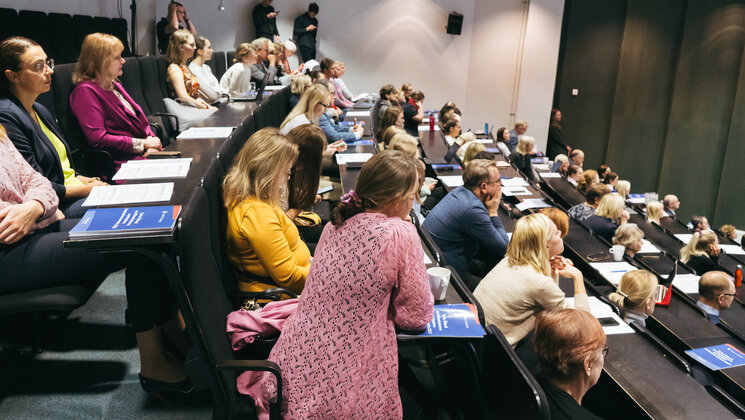Doctoral defence: Ahto Salumets “Bioinformatics analysis of various aspects in immunology“
On 3 May at 12:15, Ahto Salumets will defend his thesis "Bioinformatics analysis of various aspects in immunology“ to obtain the degree of Doctor of Philosophy (in Computer Science).
Supervisors:
Prof. Hedi Peterson, University of Tartu
Prof. Pärt Peterson, University of Tartu
Opponents:
Prof. Benjamin Fairfax, University of Oxford (UK)
Assoc. Prof. Can Kesmir, University of Utrecht (Netherlands)
Summary
Bioinformatics is an interdisciplinary field that combines computer science, statistics, and biology to study biological systems. In this thesis, we used bioinformatics analysis to answer several immunological questions.
In one of our studies, we focused on characterizing different T cell subpopulations, which are immune cells that play a critical role in adaptive immunity. We specifically looked at CD8+ TEMRA cells, a population that has been associated with age-related health problems. By examining their DNA methylation patterns, which is a chemical modification essential for defining a cell's phenotype, we identified specific methylated positions in DNA that could predict TEMRA cell levels. This model could be useful for monitoring age-associated immune dysfunction.
In the second study, we compared DNA methylation patterns between conventional T cells and immune response-suppressing regulatory T cells. We observed vast differences in thousands of positions and identified differential methylation in a known risk locus for Graves’ disease. Although we could not determine the exact role of this locus in the disease, our work provides a foundation for future investigations to explore if this genetic locus affects regulatory T cells’ phenotype and predisposes individuals to the development of Graves’ disease.
In the third study we focused on medullary thymic epithelial cells, a key cell type involved in T cell development. Our analysis revealed how these cells differentiate similarly to keratinocytes, which are cells that make up the skin's outer layer. We found that the late stages of medullary thymic epithelial cell differentiation contribute to a tonic inflammatory state in the thymus that is relevant for T cell development.
Lastly, we contributed to COVID-19 research by analyzing longitudinally obtained samples from COVID-19 patients with different clinical manifestations. Our findings showed that the disease is associated with apoptotic pathways, particularly in severe cases. Apoptosis is a form of programmed cell death that occurs when cells are damaged or infected. We also found evidence of a long-term inflammation among asymptomatic individuals, which could have implications for long COVID.
In one of our studies, we focused on characterizing different T cell subpopulations, which are immune cells that play a critical role in adaptive immunity. We specifically looked at CD8+ TEMRA cells, a population that has been associated with age-related health problems. By examining their DNA methylation patterns, which is a chemical modification essential for defining a cell's phenotype, we identified specific methylated positions in DNA that could predict TEMRA cell levels. This model could be useful for monitoring age-associated immune dysfunction.
In the second study, we compared DNA methylation patterns between conventional T cells and immune response-suppressing regulatory T cells. We observed vast differences in thousands of positions and identified differential methylation in a known risk locus for Graves’ disease. Although we could not determine the exact role of this locus in the disease, our work provides a foundation for future investigations to explore if this genetic locus affects regulatory T cells’ phenotype and predisposes individuals to the development of Graves’ disease.
In the third study we focused on medullary thymic epithelial cells, a key cell type involved in T cell development. Our analysis revealed how these cells differentiate similarly to keratinocytes, which are cells that make up the skin's outer layer. We found that the late stages of medullary thymic epithelial cell differentiation contribute to a tonic inflammatory state in the thymus that is relevant for T cell development.
Lastly, we contributed to COVID-19 research by analyzing longitudinally obtained samples from COVID-19 patients with different clinical manifestations. Our findings showed that the disease is associated with apoptotic pathways, particularly in severe cases. Apoptosis is a form of programmed cell death that occurs when cells are damaged or infected. We also found evidence of a long-term inflammation among asymptomatic individuals, which could have implications for long COVID.



